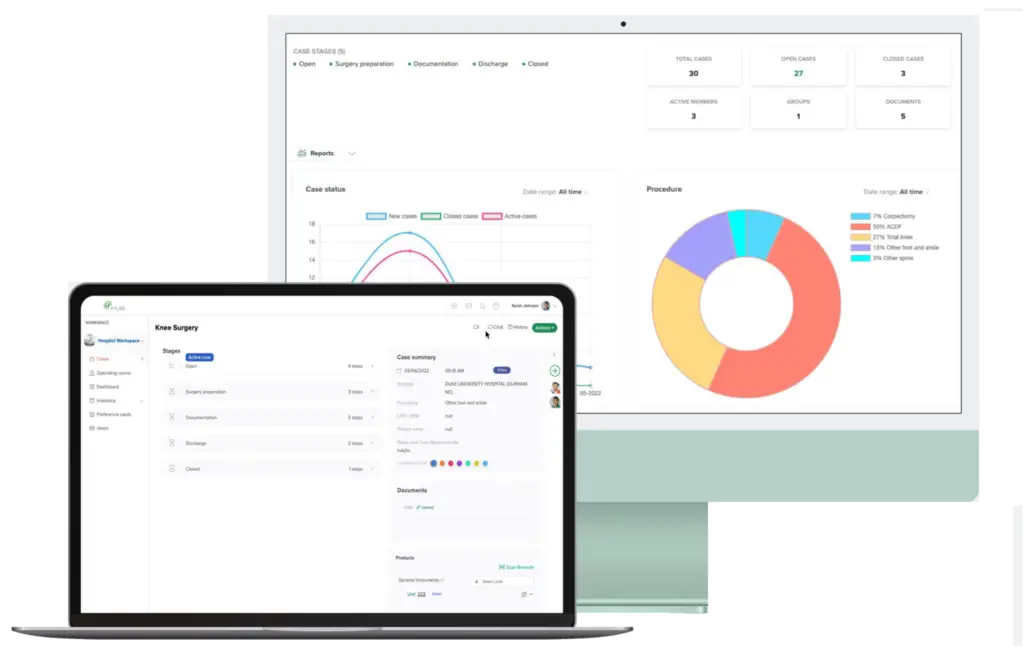Effective medical device inventory management is crucial for healthcare facilities to ensure the availability of essential equipment, minimize costs, and enhance patient care. By implementing strategic inventory management practices, healthcare providers can optimize their operations and achieve the best outcomes.
Key Strategies for Optimizing Medical Device Inventory Management
1. Implement Automated Inventory Systems
Automated inventory systems streamline the tracking and management of medical devices. These systems use barcodes or RFID technology to monitor inventory levels in real-time, reducing manual errors and ensuring accurate records. Key benefits include:
- Efficiency: Automates the tracking of inventory, reducing the need for manual entry.
- Accuracy: Minimizes human error, ensuring precise inventory counts.
- Real-Time Data: Provides up-to-date information on inventory levels and usage.
2. Conduct Regular Inventory Audits
Regular audits are essential to maintain accurate inventory records and identify discrepancies. Conducting physical counts of medical devices and comparing them to inventory records helps identify issues such as overstocking, shortages, and expired items. Key practices include:
- Scheduled Audits: Perform audits on a regular basis, such as quarterly or bi-annually.
- Random Spot Checks: Conduct unannounced audits to ensure ongoing accuracy.
- Discrepancy Resolution: Investigate and resolve any discrepancies promptly.
3. Optimize Stock Levels
Maintaining optimal stock levels ensures that medical devices are available when needed without tying up excessive capital in inventory. Techniques to achieve this include:
- Just-In-Time (JIT) Inventory: Order devices as needed to reduce storage costs.
- Economic Order Quantity (EOQ): Calculate the ideal order quantity to minimize costs related to ordering and holding inventory.
- Par Levels: Establish minimum and maximum inventory levels to guide ordering decisions.
4. Leverage Data Analytics
Data analytics tools provide valuable insights into inventory usage patterns, helping healthcare facilities make informed decisions. By analyzing data on device utilization, facilities can identify trends, predict future needs, and optimize inventory levels. Key benefits include:
- Usage Patterns: Understand which devices are used most frequently and adjust inventory levels accordingly.
- Demand Forecasting: Predict future inventory needs based on historical data.
- Cost Analysis: Identify cost-saving opportunities through efficient inventory management.
5. Standardize Procurement Processes
Standardizing procurement processes ensures consistency and efficiency in ordering medical devices. By establishing clear guidelines and procedures, healthcare facilities can streamline the procurement process and avoid delays. Key practices include:
- Vendor Management: Develop strong relationships with reliable suppliers.
- Bulk Purchasing: Take advantage of bulk purchasing to reduce costs.
- Purchase Order Automation: Use automated systems to manage purchase orders and approvals.
6. Enhance Staff Training
Proper training for staff involved in inventory management is crucial for maintaining accurate records and ensuring compliance with regulations. Training programs should cover:
- Inventory Management Systems: Ensure staff are proficient in using automated systems.
- Audit Procedures: Train staff on how to conduct effective inventory audits.
- Regulatory Compliance: Educate staff on relevant regulations and best practices for inventory management.
Conclusion
Optimizing medical device inventory management is essential for healthcare facilities to ensure the availability of critical equipment, minimize costs, and enhance patient care. By implementing automated systems, conducting regular audits, optimizing stock levels, leveraging data analytics, standardizing procurement processes, and enhancing staff training, healthcare providers can achieve the best outcomes in inventory management.
How HUB Healthcare Can Help
HUB Healthcare offers advanced solutions to support effective medical device inventory management. Our platform includes real-time inventory tracking, automated replenishment, and data analytics to provide actionable insights into inventory usage and trends. With HUB Healthcare, you can maintain optimal stock levels, streamline procurement processes, and ensure compliance with regulatory standards. Leveraging our comprehensive tools, healthcare facilities can enhance efficiency, reduce costs, and improve patient care.
Leading the Change
HUB Healthcare stands at the forefront of medical device inventory management innovation. Our platform integrates advanced technology with practical industry practices, positioning us as a reliable choice for healthcare providers. We focus on delivering solutions that enhance efficiency and accuracy in inventory management, meeting the critical needs of the healthcare sector. Our commitment to technological advancement and effective strategies makes HUB Healthcare a leader in transforming healthcare inventory management.
Our platform is designed to meet the challenges of the healthcare industry, where efficient inventory management is crucial for patient care. HUB Healthcare’s approach extends beyond traditional methods, offering integrated solutions that improve overall operational workflows. For healthcare providers seeking to upgrade their inventory management systems, HUB Healthcare offers a robust and effective solution. We provide the tools and support necessary for healthcare facilities to manage their inventory more effectively, ensuring better patient care and streamlined operations.
Visit our Help Center – Here







